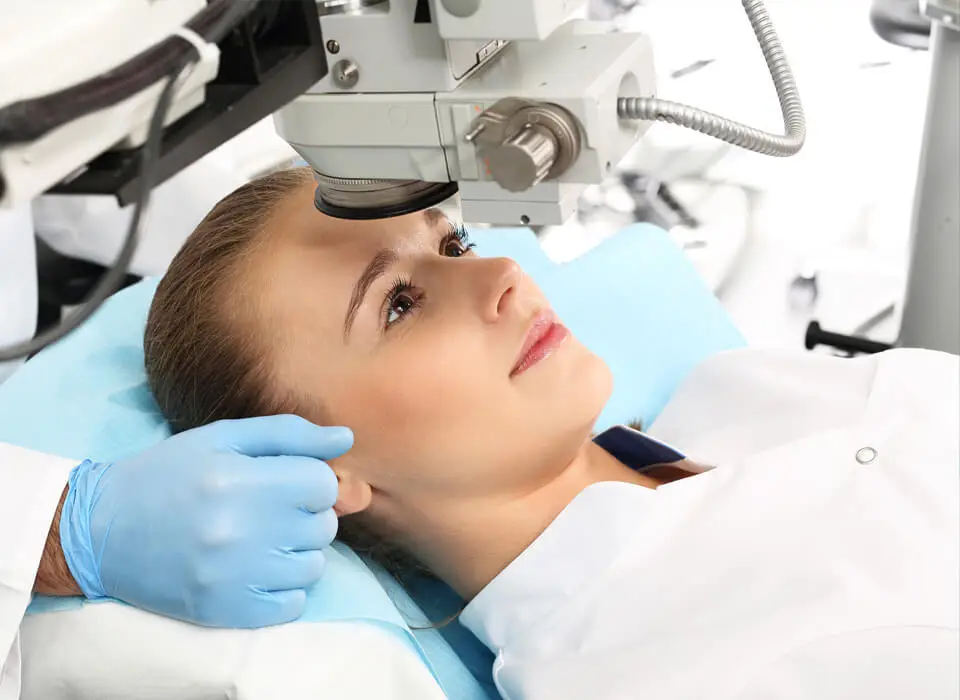PRK Vision Correction
in Meridian, Idaho
What is PRK?
PRK (Photo-Refractive Keratectomy) is an excellent treatment option for some of our patients, offering unique advantages compared to other refractive surgeries. For individuals with thinner corneas—whether naturally or due to previous surgeries—PRK is a safer, less invasive solution. Unlike LASIK, PRK doesn’t involve creating a flap, which means there’s less concern about disrupting the surgery during recovery.
PRK is often the choice for people at higher risk of eye injury, such as those in law enforcement, the military, or athletes in contact sports. Dr. Merkley takes pride in serving these dedicated individuals, many of whom elect to have PRK to minimize their risks. Also known as LASEK (Laser-Assisted Epithelial Keratomileusis) or Advanced Surface Treatment, PRK delivers visual results just as impressive as LASIK.
While many patients choose LASIK for its quicker recovery, PRK offers equally excellent long-term vision. The main difference is that it takes a bit longer to reach those results with PRK. Some believe PRK is the only alternative to LASIK, but that’s not the case. At Merkley Cataract and Laser, we offer the most comprehensive range of refractive surgeries in the region, giving you multiple options tailored to your needs.
If PRK is the right choice for you, the slightly longer recovery period is a small trade-off for a lifetime of clear, beautiful vision.

Am I a Candidate for PRK?
Like LASIK, PRK is ideal for adults with stable vision and good overall health. However, certain eye conditions—such as cataracts, glaucoma, or keratoconus—may make you ineligible for PRK. That said, we offer a variety of other options that may still suit your needs. PRK is the least invasive method to reshape the cornea, making it a safer choice for individuals with thin corneas.
PRK effectively treats nearsightedness (myopia), farsightedness (hyperopia), and astigmatism. Even if you’ve been told you’re not a candidate for LASIK, you might still qualify for PRK.
At Merkley Cataract and Laser, we begin with a complimentary screening evaluation that includes a comprehensive analysis in our state-of-the-art imaging suite. This detailed assessment allows us to thoroughly examine your eyes’ unique anatomy and optical properties, ensuring we select the best treatment for your vision. If PRK isn’t the ideal option, we’ll explore other procedures such as SMILE, EVO ICL, Refractive Lens Exchange (RLE), or LASIK, tailoring the solution to meet your specific vision needs.
What to Expect on the Day of Your PRK Procedure
PRK is a quick, effective in-office procedure. You can wear your usual clothes, but you’ll need someone to drive you home afterward. The procedure itself only takes about 10 minutes for both eyes, and the laser portion lasts just a few seconds. Most patients choose to take an oral medication beforehand to help them relax. Your eyes will be completely numbed, so you won’t feel anything while the laser works its magic.
During the procedure, Dr. Merkley will gently remove the outer layer of your eye (the ‘skin’ of the eye). Then, the laser will precisely reshape your cornea, improving your eye’s focus and vision. The slower recovery time with PRK is due to the healing of the outer layer, which usually takes about 5 days.
Once you’re home and the numbing drops wear off, you may experience some discomfort. Most patients describe it as a mildly bothersome sandy or scratchy feeling during those first few days while the eye heals. After surgery, you’ll need to use medicated eye drops for about a month and lubricating drops to keep your eyes comfortable and promote healing.
Many patients take about 5 days off work while their eyes heal. After this time, the scratchy sensation usually disappears, and your vision will have recovered enough to be functional. We’ll work with you to schedule your surgery at a time that fits your lifestyle. Rest assured, we’ll be with you every step of the way to ensure a smooth experience and a successful recovery.
